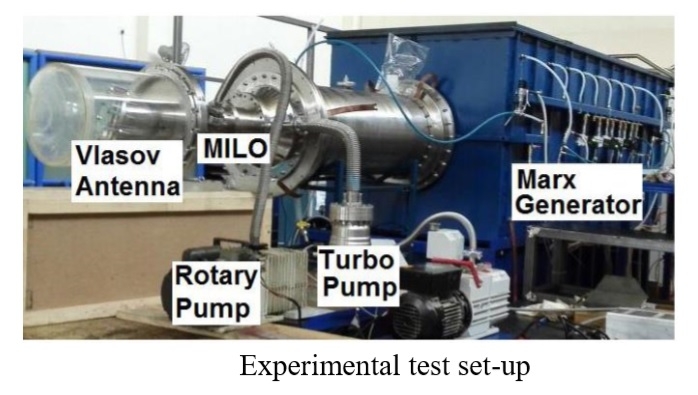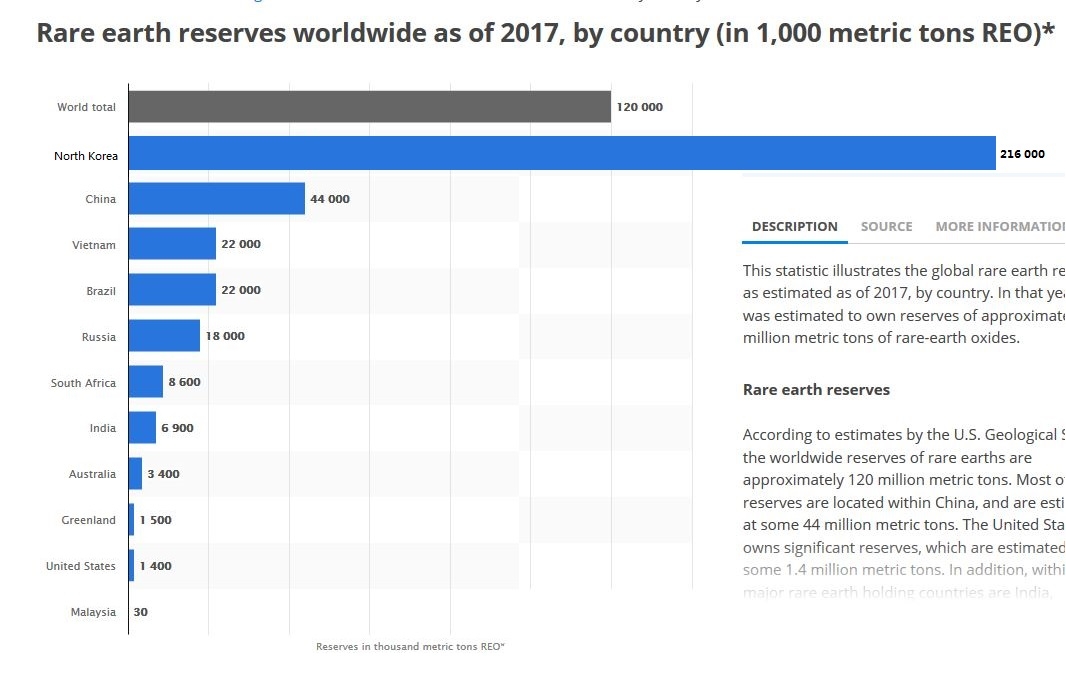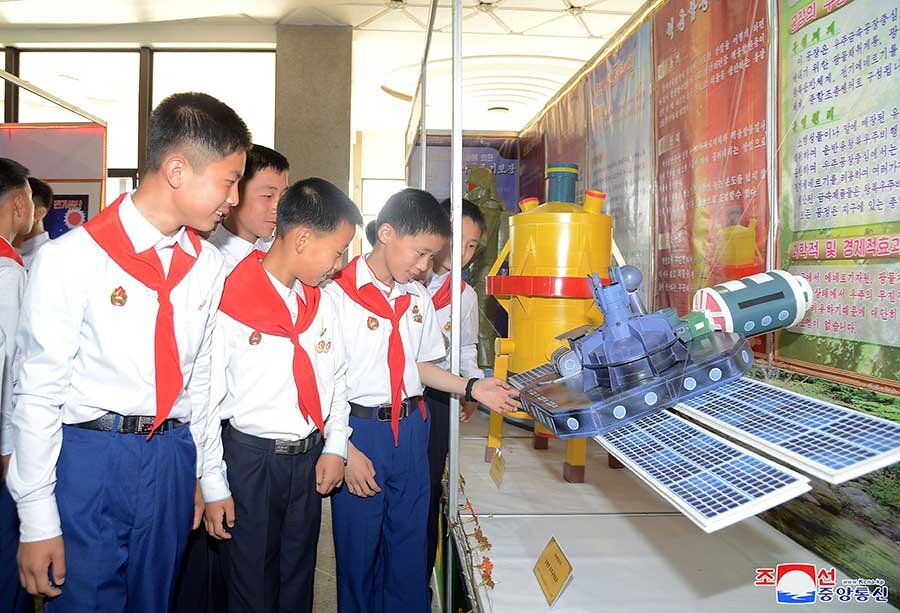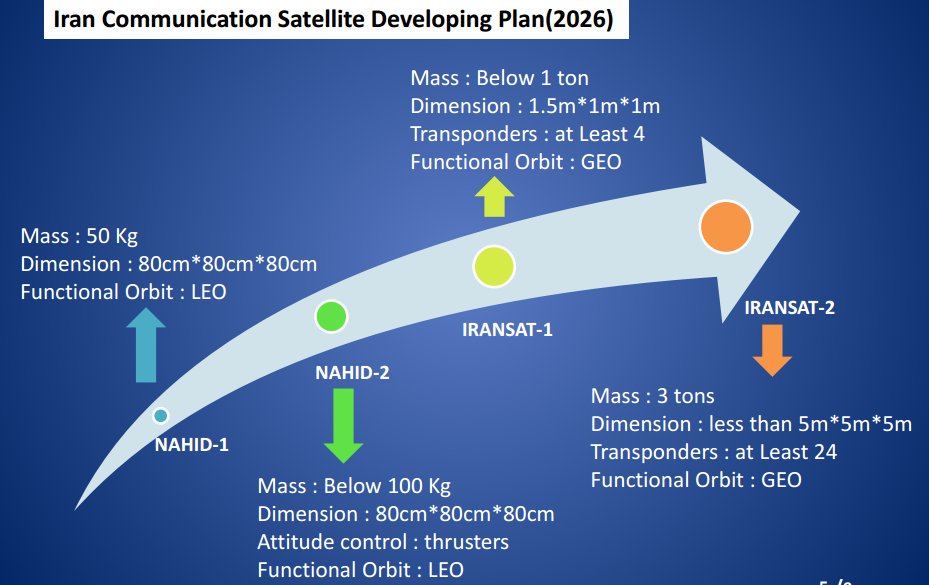Galactic Penguin SST
BANNED

- Joined
- Aug 10, 2017
- Messages
- 1,454
- Reaction score
- 1
- Country
- Location
France Sparks The First Global Arms Race In Outer Space V1.1a
https://defence.pk/pdf/threads/north-korea-defence-forum.448499/page-59#post-12419189
Update V1.1b.(15th July 2020) here:
France Sparks The First Global Arms Race In Outer Space V1.1b
First edited 3 August 2019; Updated 15 July 2020
Table of Contents
1. Introduction
2. Historical Background Updated 15 July 2020
2.1. The Opening Solar Concentrator Updated 15 July 2020
2.2. Chang Chin Liang's Cometary Lensing Updated 15 July 2020
2.3. The Empire of Japan's FUGO Updated 15 July 2020
3. The 1966 Outer Space Treaty
4. Prerequisite for Space to Ground Capabilities
5. The Chain Reaction's Contenders
5.1. The Four Major Space Powers
5.1.1. France
5.1.2. Russia
5.1.3. The U.S.
5.1.3.1. Starlink Updated 11 June 2020
5.1.3.1.1. Star Wars V2.0 Updated 15 July 2020
5.1.4. China
5.1.4.1. China's Orbital Solar-powered Laser/Maser Updated 4 December 2019
Part 2
5.2. The Four Minor Space Powers
5.2.1. India, Israel
5.2.2. North Korea
5.2.3. Iran
5.3. The Outsider
5.3.1. Japan Updated 15 July 2020
6. Conclusion Updated 15 July 2020
1. Introduction
On 25 July 2019, France's Defence Minister has stated that in order to catch up with the great space powers, Paris would invest 700 millions Euros to deploy high power space based lasers by 2023.
With 2 billions Euros annual budget in space military, France still lags behind the U.S. (50 billions), China (10 billions) and Russia (4 billions).
These offensive weapons would include machine guns to destroy solar panels of approaching enemy spacecrafts, a clear reference to Russia's 2017 Louch-Olympe satellite that was caught marauding near the Franco-Italian Athena-Fidus military communications satellite.
But also laser to destroy enemy spacecrafts' solar pannel and optics.
Most important, stressing the use of adapative optics, Paris has reveal its intention to give its space assets a true space to ground capability!
To control all these new space platforms constituting a new Space Defence Force, Macron, speaking on 13 July 2019 ahead of Bastille Day celebrations, said that a new dedicated command would be formed in September.
In a chain reaction, sparked by France's decision, all the members of the Elite Club of Space Superpowers are expected to announce the deployment of their own Space to Ground assets within months to come.
2. Historical Background
2.1. The Opening Solar Concentrator
"
Yang-Sui (阳燧) Solar Ignitor, World’s Oldest Solar Device
During the sixth century BCE, Confucius wrote about the common use of curved mirrors shaped from shiny metal to concentrate the rays of the sun for making fire. These became known as yang-suis – translating to solar ignitors, or burning mirrors.
According to the great philosopher, upon waking up the eldest son would attach a solar ignitor to his belt as he dressed for the day. It was his duty to focus the solar rays onto kindling to start the family’s cooking fire.
According to another early text, the Zhouli, which describes rituals dating far back into Chinese antiquity, “The Directors of the Sun Fire have the duty of transferring with burning mirrors the brilliant flames of the sun to torches for sacrifice.”
Although scholars found over the years many ancient texts discussing solar ignitors, the discovery of an extant yang sui eluded them for centuries. Quite recently came the Eureka moment. Digging up a tomb that dated to about 3,000 years ago, a team of archaeologists found in the hand of a skeleton a bowl-shaped metal object. While the inner side could have passed for a wok, the exterior trough had a handle in its center. That’s what caught the eye of the two archaeologist in charge of the dig, Lu Demming and Zhai Keyong. They immediately brought the relic back to the local museum and ordered its specialists to make a mold from the original and then cast a copy in bronze.
After polishing its curved surface to a high degree of reflectance, the inquisitive archaeologists focused sunlight onto a piece of tinder just as the eldest son would have done so many years past, and in seconds the combustible material burst into flames. “This verified without a doubt that the purpose of the artifact is to make fire,” Lu and Zhai later wrote, assured of having found the oldest solar device in the history of humanity.
Now that the world could see what a real yang-sui looked like, museums retrospectively identified 20 more previously unclassified objects as solar ignitors. Multiple molds for turning out yang suislater found at a Bronze Age foundry in Shanxi province, close to the first find, suggest a mass market once existed for them. In fact, yang suis were probably as ubiquitous in early China as are matches and lighters today. The yang sui “should be regarded as one of the great inventions of ancient Chinese history,” remarked its discoverers, impressed by the ability of their forefathers to figure out the complex optics for such optimal performance so early in time.

▲ 1. Yang-Sui (阳燧) Solar Ignitor

▲ 2. Yang-Sui (阳燧) Solar Ignitor

▲ 3. Yang-Sui (阳燧) Solar Ignitor

▲ 4. Flashforward: Korean-style Gigantic Yang-Sui (阳燧) Solar Ignitor?
Source:
http://baike.baidu.com/link?url=g5Z...0gjx417MbY5GY4Td0zcZXuadDnxbftC2jaaYWfhpkvj-_
http://cleantechnica.com/2014/06/05/worlds-oldest-solar-device/
During the sixth century BCE, Confucius wrote about the common use of curved mirrors shaped from shiny metal to concentrate the rays of the sun for making fire. These became known as yang-suis – translating to solar ignitors, or burning mirrors.
According to the great philosopher, upon waking up the eldest son would attach a solar ignitor to his belt as he dressed for the day. It was his duty to focus the solar rays onto kindling to start the family’s cooking fire.
According to another early text, the Zhouli, which describes rituals dating far back into Chinese antiquity, “The Directors of the Sun Fire have the duty of transferring with burning mirrors the brilliant flames of the sun to torches for sacrifice.”
Although scholars found over the years many ancient texts discussing solar ignitors, the discovery of an extant yang sui eluded them for centuries. Quite recently came the Eureka moment. Digging up a tomb that dated to about 3,000 years ago, a team of archaeologists found in the hand of a skeleton a bowl-shaped metal object. While the inner side could have passed for a wok, the exterior trough had a handle in its center. That’s what caught the eye of the two archaeologist in charge of the dig, Lu Demming and Zhai Keyong. They immediately brought the relic back to the local museum and ordered its specialists to make a mold from the original and then cast a copy in bronze.
After polishing its curved surface to a high degree of reflectance, the inquisitive archaeologists focused sunlight onto a piece of tinder just as the eldest son would have done so many years past, and in seconds the combustible material burst into flames. “This verified without a doubt that the purpose of the artifact is to make fire,” Lu and Zhai later wrote, assured of having found the oldest solar device in the history of humanity.
Now that the world could see what a real yang-sui looked like, museums retrospectively identified 20 more previously unclassified objects as solar ignitors. Multiple molds for turning out yang suislater found at a Bronze Age foundry in Shanxi province, close to the first find, suggest a mass market once existed for them. In fact, yang suis were probably as ubiquitous in early China as are matches and lighters today. The yang sui “should be regarded as one of the great inventions of ancient Chinese history,” remarked its discoverers, impressed by the ability of their forefathers to figure out the complex optics for such optimal performance so early in time.
Source:
http://baike.baidu.com/link?url=g5Z...0gjx417MbY5GY4Td0zcZXuadDnxbftC2jaaYWfhpkvj-_
http://cleantechnica.com/2014/06/05/worlds-oldest-solar-device/
,,

2.2. Chang Chin Liang's Cometary Lensing
Extract from a letter sent to the British Royal Observatory, at Greenwich, from Sze Zuk Chang Chin Liang of the Imperial Polytechnic College, at Shanghai, after observing the Halley comet in 1910 and worrying about the Earth being burned during future visits, appears to be the earliest account recorded and related to some natural space lensing able to destroy the ground surface:
It is obvious the comet has no tail at all and the so-called tail must be the Sun rays which, while passing through the body of the comet, look like a tail. If the body of the comet is transparent and like the Earth has its two poles fairly flat and thus form a convex lens then everything on the Earth will be burnt provided the sunlight passes through the body of the comet and the focus falls on the surface of the Earth.
http://web.archive.org/web/20200715070057/https://h2g2.com/edited_entry/A60281831
http://archive.is/I0SKO


2.3. The Empire of Japan's FUGO
The Empire of Japan was the first to develop anti-air high power microwave weapons during the Pacific war.
Nippon Radio Telegraph and Telephone Co., Ltd. has developped in 1939 the world’s first cavity magnetron, with punched positive copper pole, 10cm wave length and 500W power.
Research on microwave weapons(く号兵器) started on December 1936 at the Imperial Japanese Army Noborito Laboratory (陸軍登戸研究所).
Research on artificial lightning generator weapons(ら号兵器) by irradiating the sky with high intensity ultraviolet beams and ionization of the air, started on April 1938.

https://archive.fo/V3GBA/dbc7cfa97f1e5490153ce6edb84da7aba5a5a1a0.jpg ; https://i.imgur.com/qvRoak6.jpg ; http://web.archive.org/web/20170116...ge/1e/61/9027d3d1f5dadf4dfaf12bdacce7602d.jpg ; http://web.archive.org/web/20190810...ruribo0209/e/ae4059113f5cd2242b85e3735eec3db7 ; https://archive.fo/Vyo4N
▲ 5. Noborito Lab 9th Institute museum: some of the various directed energy weapons (microwave, UV, IR, Ultra sound, etc) and other automated/remote-controlled platforms research.
Anti-Aircraft EMF weapons rely on air ionization and breakup, that occurs with an EMF frequency of 9.37GHz, the peak power up to 200kW, pulse width from 0.3 to 2.0μs.
Second Naval Technology Factory Ushio Laboratory ruins (第二海軍技術廠牛尾実験所遺跡)
Coordinates:
34°51'23.8"N, 138°07'44.6"E
34.856607°N, 138.129065°E
https://www.google.com/maps/place/3...32m/data=!3m2!1e3!4b1!4m2!3m1!1s0x0:0x0?hl=en
Note: The site and all the concrete ruins have been removed circa February 28, 2015.

https://archive.fo/0GLgP/d0db040b4cbc3ca6bc0fb4df2f199566ea993c5e.jpg ; https://i.imgur.com/70HuDKy.jpg
▲ 6. Second Naval Technology Factory Ushio Laboratory ruins (第二海軍技術廠牛尾実験所遺跡)
Shimada Laboratory was dedicated to research on "death ray" during the war.
After the Battle of Midway, Admiral Isoroku Yamamoto advocated the need to develop new revolutionary weaponry. The "death ray" project was launched around June to August 1942. Construction work started around May 1943. With staff member of 1,457 people and 60 researchers.
Original plan was first to increase the ouptut power of the ultra-high frequency from the kW to hundreds of kW.
Nuclear power generator was expected to be used.
The basic design has been completed in 1944 around September, but it did not reach the stage of practical application, with a high-frequency radio wave output of 50kW using a 10 meters diameter parabolic reflector.
The whole project ended unfinished.

http://web.archive.org/web/20170116...or.blogimg.jp/shizuokak/imgs/8/a/8a60fe44.jpg ; http://web.archive.org/web/20160607072856/http://blog.livedoor.jp/shizuokak/archives/4794187.html ; https://archive.is/0rUGw
▲ 7. Very rare image of the 10 meters diameter parabolic reflector 50 kW output High-frequency radio wave. 昭和25年1月
As for the Imperial Japanese Navy, it began a nuclear propulsion for ships' feasibility study under the direction of Captain Yōji Itō at the Navy Technical Research Institute around January 1942.
Itō assembled a panel of experts, designated the “Committee for Research on the Application of Nuclear Physics (B-Research),”and invited Nishina to serve as chair.
The committee met ten or more times until March 1943, when the panel of experts concluded that Japan could not develop a nuclear weapon in time for the war. Itō disbanded the committee and turned his attention to developing electron weapons, including a “death ray.”
Therefore, to bypass the inherent limitations cause by atmospheric air ionization and breakup that caused a tremendous loss of power and limited the useful range of all electromagnetic frequencies (EMF) DEW to under several hundreds of meters to a few kilometers, the Empire of Japan started from 1943 to investigate DEW produced by particle accelerators (cyclotrons).
Nishina laboratory at RIKEN (Institute for Physical and Chemical Research) was the first to study electron-decaying particles for DEW, called Uchūsen weapons (宇宙線兵器).
On November 1944, the Empire of Japan started the launch of the world's first intercontinental weapons system.
With a wave of 9'300 transpacific fūsen bakudan (風船爆弾) or "windly vessel" sent 10'000 km away toward North America.
The program is known as Fu-Go (ふ号兵器), and the new platforms surf the powerful Kamikaze (神風: Divine Wind) stratospheric current (called afterwards jet streams in the West) that were discovered by Wasaburo Ooishi back in 1924, thus far above enemy interceptors altitude.
Conventional explosives alone were not enough for the Empire of Japan to defeat the U.S. and other Allies.
But DEW intercontinental stratospheric FUGOs would. As announced by the official Nipponese Domei news agency and reported on Monday 4th June 1945, large scale attacks with crewed gigantic stratospheric airships were to be expected soon!
One major hurdle was the imperative need to be able to weaponize an airborne particle accelerator reaching the threshold of >300 MeV to 500 MeV for protons/deuterons beam, needed to produce the first usefull class of electron-decaying particles.
The overall size and mass of the cyclotron, with the electromagnet alone weighting 220 tons, should have imperatively needed to be shrinked.
A more compact design, while able to reach even higher energy level could have been possible with the replacement of the single massive electromagnet at the core of Nishina's cyclotron, with several smaller and more powerfull magnets for bending the particle beams, while acceleration would have been produced by radiofrequency cavities (synchrocyclotron).



3. The 1966 Outer Space Treaty
France has ratified the treaty in 1967.
The Outer Space Treaty provides the basic framework on international space law, including the following principles:
•the exploration and use of outer space shall be carried out for the benefit and in the interests of all countries and shall be the province of all mankind;
Obviously space development was military since day one, even before 1966 and to this day.
•outer space shall be free for exploration and use by all States;
Obviously, North Korea and Iran, and to a lesser extend China before 2010, are not allowed to benefit from space development by the West.
•States shall not place nuclear weapons or other weapons of mass destruction in orbit or on celestial bodies or station them in outer space in any other manner;
Obviously, WMDs are orbiting in outer space, the Soviet FOB nukes being only a very small part of them.
•the Moon and other celestial bodies shall be used exclusively for peaceful purposes;
Obviously, both the U.S. and Japan have tested kinetic weapons on asteroids.
•States shall be liable for damage caused by their space objects;
Obviously, the U.S. never did, hiding behind a convenient craftily fabricated 'Bermuda Triangle' and 'UFO' hoaxes as smoke screens! Nor did China, Russia and Europe for all the rocket stages falling over Cambodia, Brazil, Myanmar, French Polynesia, etc.
•States shall avoid harmful contamination of space and celestial bodies.
Obviously, as outer space environment is highly radioactive, nuclear reactors don't really add much radiations!
In a nutshell, The Outer Space Treaty was and is a total farce from A to Z.
4. Prerequisite for Space to Ground Capabilities
Only the top four major space powers of the most elite club of Space to Ground Capable Nations could deploy such assets, that requires the most challenging scientific skills to overcome the numerous technological hurdles.
•Directed Energy Weapons (D.E.W.) such as Lasers must be of no less than several hundreds of kW and up to several MW in output.
•With intensities of several hundreds of kW output, the power generation is key, be it chemical, nuclear or even solar.
•Adaptive Optics (A.O.) are necessary to counter distortions from the atmospheric turbulence.
•To brute-force with several MW power outputs and above will only result in backscattering, ionization and breakdown of the atmospheric molecules. Thus the additional technological solutions needed to circumvent this major hurdle: pulsed laser, etc.
•Large optical aperture are necessary to achieve the resolution required for acquisition and identification of ground targets, and conduct the tracking and the engagement: decametric size.
•The total mass is limited by the payload capacity of the space launchers: above several 20 tons.
•The total volume is also limited by space launchers, therefore space docking capability might be necessary: spacelab size.
•An orbital fleet is necessary to increase the total coverage, especially if 24/7 worldwide coverage is needed: more than 30.
5. The Chain Reaction's Contenders
5.1. The Four Major Space Powers
5.1.1. France
France has conducted research on Adaptive Optics for military applications since the 1986s, and ASAT Lasers for years.
Launched in 14th May 2009, ESA’s Herschel telescope was the largest mirror flown in space. This 3.5 m-diameter reflector was built by the French silicon carbide manufacturer Boostec.
France has a current payload capability of less than 20 tons into LEO with its Arian 5 launchers. Arian 6 will slightly increase it payload to 21 tons by 2021.
France has mastered space docking technologies, and could assemble several modules to form large DEW complex with a total mass under 100 tons.
France has mastered miniaturized nuclear powerplant, such as those used in its submarine fleet.
France has demonstrated its ability to deploy complex array of military satellites, in the Galileo global navigation satellite system (GNSS) program. In 2021, it will launch the CERES triplets.
700 millions Euros have been allocated for developing space weapons by 2023.
To operate these Space DEW France plans to set up its own space force, the “Air and Space Army,” as part of the French Air Force. The new organization will be based in Toulouse, but it’s not clear if the Air and Space Army will remain part of the French Air Force or become its own service branch.

http://web.archive.org/web/20190803...send-into-space-combat-lasers-why-735x400.jpg ; https://archive.is/pOi8I/f908a34a9aafc8e75fe03bc476c76f32780b43bd.jpg ; https://tech-news.websawa.com/france-plans-to-send-into-space-combat-lasers-why/
▲ 9. France's Space to Ground Laser by 2023, artistic illustration. July 2019.
5.1.2. Russia
As the target of Paris's announcement, Russia is expected to be the first to react, and before the year's end (2019).
More over, Russia inherits from the Soviet-era first DEW platform launched on 15 May 1987, during the maiden flight of the heavy lift launcher Energia.
"Skif-DM" 17F19DM ("Скиф-ДМ" 17Ф19ДМ), disguised under the official name "Polyus", or Mir-2 (Peace-2) Soviet Space Station.
Polyus was the Soviet response to the project "Star Wars" launched by the American president Reagan. It was to be in fact a space combat laser station.
Due to a series of failures of Energia during the launch, Polyus would not enter orbit but crash in the Pacific Ocean.
In the middle of the year 1985 it did not seem difficult to make a spacecraft of 100 tons.
Then it was ordered to be transformed to a spacecraft with a length of almost 37 m and a diameter of 4.1 m weighting nearly 80 t and including 2 principal sections: the small service block, and the larger targeting module.
Fitted with a megawatt-class carbon-dioxide laser, Polyus was covered by an optically black shroud and it was suspected that this may have been radar absorptive as well.
After the failed launch, studies for another space station of 100 tons were then started.

http://web.archive.org/web/20190808172426/http://www.buran-energia.net/img/polious-animation.gif ; https://archive.fo/nAMpN/8821cbd4e7d75264f08a388646aa80538e36c047.gif ; http://www.buran.ru/htm/cargo.htm
▲ 10. Launched on 15 May 1987, from Baikonur Cosmodrome Site 250, Polyus would have been the core module of the new MIR-2 (Peace-2) Soviet space station. The Polyus military testbed was the first disclosed orbital directed energy platform, fitted with a megawatt-class carbon-dioxide laser.
Polyus was covered by an optically black shroud and it was suspected that this may have been radar absorptive as well.
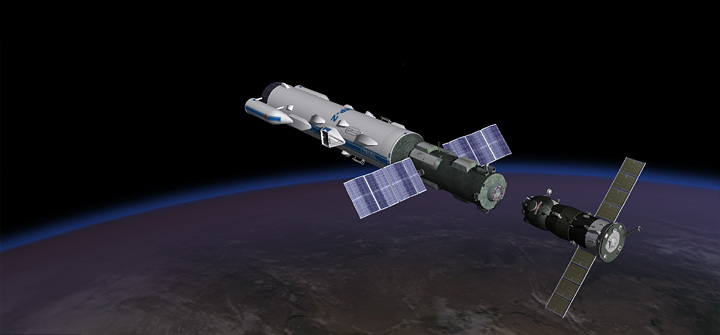
http://web.archive.org/web/20190808175040if_/http://www.buran.ru/images/jpg/skif-16.jpg ; https://archive.fo/GhocZ/a1076e2406430844ff7c29a4373431d3ac029b25.jpg ; http://www.buran.ru/htm/cargo.htm
▲ 11. Crew docking with Mir-2 (Peace-2) space combat laser station.

http://web.archive.org/web/20190808175231if_/http://www.buran.ru/images/jpg/skif-11.jpg ; https://archive.fo/zpXZ7/081a1b22a836de2e5e3b391e96f09c3c479c2cd7.jpg ; http://www.buran.ru/htm/cargo.htm
▲ 12. Mir-2 (Peace-2) space combat laser station engaging an orbital target.
The Soviet Topaz-II power system is a 5-6 kWe space nuclear system that is based on thermionic power conversion.
Its development was curtailed after 1989. As an alternative to chemical lasers, an electric powered laser of the 100s kW or MW class would necessitate to upscale the nuclear plant, or to couple powerful battery banks.
The Araks satellite was the closest, the Soviet space industry came to matching the optical systems of the U.S. military KH-11 Space Telescope and its Hubble civilian equivalent. Launched on June 6th 1997, with a Cassegrain telescope main mirror's diameter of 1.5 meters.
Russia has demonstrated its ability to deploy complex array of military satellites, such as the GLONASS global navigation satellite system (GNSS) program.
Russia no longer operates the Energia launcher. Currently the Proton-M allows to place a 22 tons payload into LEO, and 24.5 tons with the Angara A5.
Several launches would be needed for assembling a DEW complex with a total mass of 100 tons.
To operate these space DEW, the Russian Space Forces have been reestablished following the 1st August 2015 merger between the Russian Air Force and the Russian Aerospace Defence Forces. The Russian Space Forces were originally formed on 10th August 1992.
5.1.3. The U.S.
The U.S. will mechanically react to the Russian move. Currently the only power to have deployed DEW in earth orbits, the only hurdle will be economic, with more than 22 trillion dollars of debt, making it a virtual beggar, dependent of the Chinese and Japanese financial godsends.
Moreover, the U.S. will continue its beggar bowl's world tour, as long as it needs to import Rare Earth Elements (R.E.E.) from China and the other R.E.E. exporters of the B.R.I.V.S. (Brazil, Russia, India, Vietnam, South Africa), only to stay afloat in the space arms race.

http://web.archive.org/web/20190808...img7/fs/Trumbeggarbowlworltour.1565277584.jpg ; https://defence.pk/pdf/attachments/...6/?temp_hash=d774ae55fb03e91fb700ad165d3930f5
▲ 13. With more than 22 trillion dollars of debt, the U.S. will continue its beggar bowl's world tour, and as long as it needs to import Rare Earth Elements (R.E.E.) from China.
The concept of Adaptive Optics (A.O.) was first proposed in a 1953 paper by astronomer Horace Babcock.
In the late 1960's and early 1970's, the U.S. military and aerospace communities built the first significant adaptive optics systems to target laser on orbiting satellites from the ground.
In the 1973s, the USAF Airborne Laser Laboratory (ALL), a modified NKC-135A aircraft, was the first test platform for airborne High Energy Laser (HEL) research.
Its carbon dioxide gas dynamic laser power output was 480 kW at 10,6 μm, able to direct a heat flux density of 100 W/cm² on a 1 km target, such as AIM-9 missiles and drones.
Lacking an Adaptive Optics system, the ALL was limited by atmospheric turbulence.
In 1984, the Space Based Laser (SBL) program was cancelled due to technological and political difficulties.
With a range of 4'000 km (up to 12'000 km), a spot size of 0.3 to 1.0 meter at focus, this orbital combat system would have weighted 35 tons and orbited at 800-1'300 km altitude. With an orbit inclination of 40°, giving a coverage per satellite of about a tenth of the earth's surface, thus requiring a 20 satellites configuration for global world coverage.
The 8 meter mirror is segmented so that it can be folded inside a launch vehicle and unfurled in orbit like flower petals.
Its deuterium-fluoride laser at 2.7 mm would have produced an 5-10 MW output.
Ground 100 kW weapons also exist, such as the High Energy Laser Tactical Vehicle Demonstrator (HEL TVD) program managed by the U.S. Army Space and Missile Defense Command/Army Forces Strategic Command’s (USASMDC/ARSTRAT).
The HEL TVD is designed to counter drones, rockets, artillery, and mortars (C-RAM/UAS).
The high energy laser system represents very low operating costs, as it requires only fuel to complete its mission, with an average cost per kill of approximately $30. There is no ordnance logistics burden, as with conventional weapons.

https://archive.vn/AjR65/d8dba78f4acb8f449724fc2278da1b53ea7b693e.jpg ; https://archive.vn/AjR65/74c567ed69cb05a8445c97e5657118ed44c91cd1/scr.png ; http://web.archive.org/web/20190722...m/wp-content/uploads/2019/05/hel-tvd_1021.jpg ; https://archive.fo/AjR65/d8dba78f4acb8f449724fc2278da1b53ea7b693e.jpg ; https://defense-update.com/20190515_hel-tvd-2.html
▲ 14. Team Dynetics 100kW-class high energy laser contract for U.S. Army. May 2019
Of course, these tactical ranges will need to be extended to several hundred of km to several thousand of km, in order to be useful from LEO. The aperture of the optics will also needed to be increased to decametric size. Aperture of 2.4 m optics and above have been orbited such as the Program 1010.
Thus the need of and uprated powerplant. Nuclear energy is the best option for this electric driven laser, keeping in mind that there is no oxygen for fuel generated electricity in earth orbit.
The U.S. fission space reactor SP-100, although cancelled, could provide 100 kW electric power, with as little as 140 kg of Uranium 235, and a reactor mass of 5.42 tons.
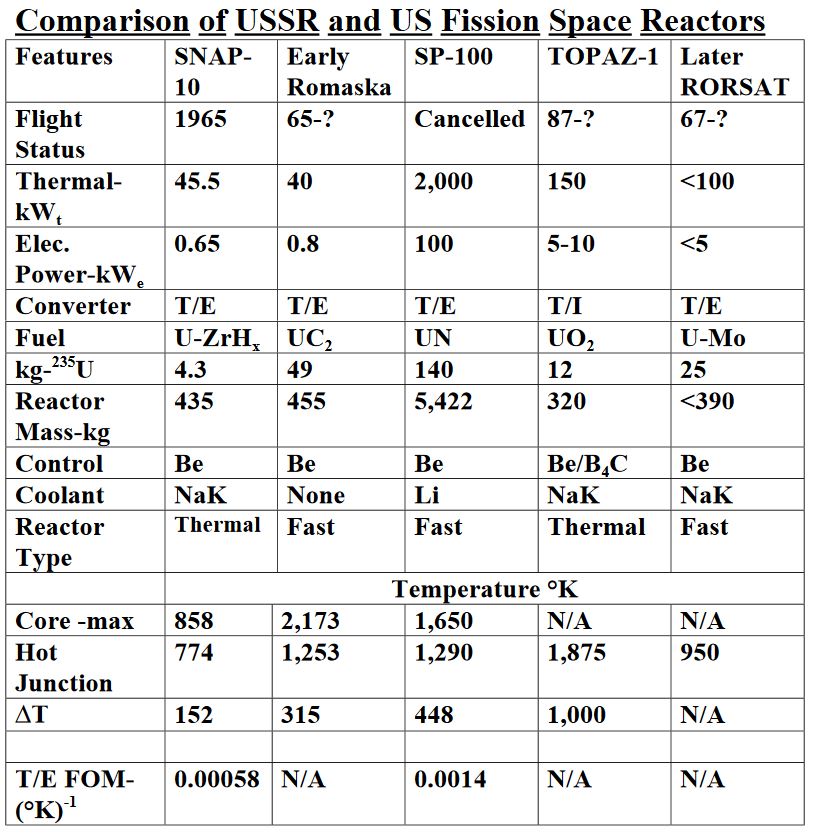
http://web.archive.org/web/20190803145518if_/http://ipic.su/img/img7/fs/U.1564844096.jpg ; https://archive.fo/czvrr/ea1c7e73d369a58c4fd9ea4022d375b43d2e88d4.jpg
▲ 15. The U.S. SP-100 fission space reactor can generate 100 kW electric power.
In comparison, the four sets of arrays of the International Space Station (I.S.S.) are capable of generating 84 to 120 kilowatts of electricity. Each of the eight solar arrays is 112 feet long by 39 feet wide. A solar array's wingspan of 240 feet (73 meters).
The Falcon-Heavy can deliver payloads of 63 tons into LEO. Payload fairing can house a payload of 12 m long 4.6 m diameter cylinder with 5 more meters on top but with decreased conical diameter thus totalling 17 m.
Enough for any large truck-sized DEW module.
The U.S. has demonstrated its ability to deploy complex array of military satellites, such as the NOSS triplets and the GPS global navigation satellite system (GNSS) program.
To operate these space DEW, under the proposal approved by President Trump in May 2019, the U.S. Space Force would be organized under the Department of the Air Force.
5.1.3.1. Starlink
Starlink is obviously totally misunderstood therefore overlooked by the world's leaders and masses, as this Trojan Horse is working 100% according to the U.S.' plan to fool the feeble-minded.
As of July 2020, 100% of the world headlines are dedicated to the COVID-19 smokescreen, unleashed on purpose by the U.S. to distract the world masses from the current Starlink weapon system build-up.
This is obviously a replay of the Cold War era classic, known as Project Azorian that used the purpose-built ship Hughes Glomar Explorer to retrieve secret codebooks and a R-21 nuclear missile on a sunken Soviet submarine from the Pacific Ocean floor in 1974 and under the cover of mining manganese nodules from the sea floor.
Today, the Project Azorian is replaced by the Starlink Program, the mining of manganese nodule by the 5G internet service, the ship Hughes Glomar Explorer by the Falcon-9 rocket, the billionaire businessman Howard Hughes by billionaire businessman Elon Musk.
And as a goal, the Soviet secret codebooks and a R-21 nuclear missile are replaced by the introduction of one of the the most advanced secret warfare of the U.S. since 1950s.
This weapon system is so versatile that few have really realized its full scope:
•First its overt active application, as advertised, apparently just an innocent civilian simple internet service with worldwide coverage.
•Then its real covert passive application, as a tool to eavesdrop on every nation worldwide, by collecting passively all cellular communication signals, and those from any electronic devices such as CCTV, digital camera, etc.
•Another covert active application, is the use when combined in synthetic aperture mode, to obtain high resolution microwave imagery made possible by a synthetic orbital array extending over several hundreds of kilometers baseline (500 km to 1000 km), that can scan all interior buildings, including humans. The Starlink platforms are indeed fitted with inter-satellite laser links, making possible the accurate ranging and timing needed in the positioning of this array.
•For offensive covert active operation, it is even possible to jam electronics of a target.
•For offensive covert active operation, the lower intensity microwave beams can be directed against biological targets, causing cancerous tissues that could later metastases, and ending with a death looking natural. But this mode requires a long 'treatment' period.
•For offensive covert active operation, the microwave beams can kill instantly with the high intensity output. Similar to a sniper strike.
•For offensive overt active operation, during a full scale war, where secrecy is no longer required, massive attacks are possible, with large use of the beam steering and beam forming mode, entire infantry divisions could be wiped out in a matter of minutes.
•In addition, it has even more powerful military applications, as the materialization of the U.S. Strategic Defense Initiative (SDI) missile defense system intended to protect the United States from attack by ballistic strategic nuclear weapons.
5.1.3.1.1. Star Wars V2.0
The Starlink dual-use civilian-military all solar-powered Megawatt-level space-based orbital microwaves (12 GHz-75 GHz) DEW platform project was officially launched in 2018, and its total mass of 3'120 tons requires the use of multiple powerful Falcon-9 launches.
To finally circumvent all the previous challenges of power output (at least 10 MW per target strike), range (no more than 550 km from target), mass (totaling 700 tons made of 20 platform of 35 tons), heat flux density (100 W/cm²), spot size at focus (0.3-1.0 m), the Starlink program has simply multiplied the number of platforms to 12'000 units for the first phase of its planned deployment.
Each satellites with a mass of 260 kg, and powered by solar panels, are fitted with four powerful phased array antenna thus enabling to track targets with beam steering and beam forming.
The total orbited mass exceeds 7 times that of the previous 1984 SBL concept.
To allow the weapon system to engage more ground targets, the phase two and three will add 15'000 more platforms each, up to a total of 42'000 within years.
It is by combining the beams of each platforms, that the critical threshold of 100 W/cm² heat flux density at focus point can be achieved. This staggering 42'000 number of platform is not an overkill but is really needed to compensate for all the losses due to external atmospheric conditions, line of sight, etc.
By looking at a very crude estimation of the number of platforms that will have a line of sight of 550 km range at any point of the earth (excluding the polar regions), at any time 24/7/365, the number reaches 170.
This estimate was made by loading all the official orbital elements or Two Line Element Set (TLE) available online and published by the the U.S. North American Aerospace Defense Command (NORAD).
But this Master Catalogue only comprises 25'000 tracked orbital objects.
We counted manually 340 satellites over the horizon at an elevation above 50 degreee, thas is within the 550 km range.
Of course the Starlink satellites are only orbiting in LEO not in GEO nor in HEO.

http://archive.is/4Z9C5/d9ee0415426f4b81317e94684e7eee9e83e9f6b3.jpg ; https://archive.is/4Z9C5/a1043a8b0d8234833ae4bd4cf877815ec3f97ef4/scr.png ; http://web.archive.org/web/20200611081949/https://i.imgur.com/1WWVKjr.jpg
▲ 16. Number of platforms that have a line of sight of 550 km range at any point of the earth (excluding the polar regions), at any time: for a 25'000 array, no less than 340 satellites over the horizon at an elevation above 50 degree.
The total number of platforms of a completed Starlink array of 42'000 satellites within striking range of any point on earth reaches therefore 1190.
This means that each of the 1190 satellites within striking range would have to beam 8'400 W output for a total combined 10 MW to the ground target, largely enough to reach a heat flux density of above 100 W/cm² threshold, thus ensuring an instant kill of any soft target.
While these ground targets are subjected to weather conditions, the interception of ballistic missiles, including intercontinental ones (ICBM) are even made all-weather since the missiles would reach the higher altitudes above the layers of clouds and even rise into space.
The use of composite material such as carbon fibers in modern rocket casings renders ballistic missiles specially vulnerable to the Starlink strikes.
In a sense, Trump is about to finally complete the 1980's SDI initiative of President Reagan known as Star Wars, breaking the Mutual Destruction Doctrine (MAD) imposed by the Russians and that had prevailed since the Cold War era, making the deterrence of the Russian nuclear arsenal totally irrelevant in the 21th century, as well as the still in the making of the Iranians.
5.1.4. China
Under the U.S. unveiled threats, in response, China would have no other option but to place its own fleet of DEW into space.
Wang Ganchang is the founder of Chinese laser fusion technology. In 1964 the Shanghai Optical Machinery Institute (上海光机所) developed a high-power 10 MW output laser. As an advocate of nuclear energy, he made with four nuclear experts in October 1978 the proposition to develop China's nuclear power.
In March 3rd, 1986, Wang Ganchang, Wang Dayan, Yang Jiachi and Chen Fangyun first proposed in a letter (《关于跟踪世界战略性高科技发展的建议》) to the Chinese government to launch researches covering lasers, microwaves, and electromagnetic pulse weapons. The plan would be adopted in November of that year under the code name Project 863 (“863计划”).
China has produced several examples of road-mobile laser weapons.
The Silent Hunter 30-100kW vehicle-based laser weapon system has a maximum range of 4km. Its laser beam can cut through a 5mm steel sheet from 1km away, or five layers of 2mm steel sheets from 800m away, according to its developer China Poly Technologies. It was first unveiled at the South African Air Show in 2016.
For Space to Ground missions, the ranges and powers will need to be uprated several fold.
The Gaofen-3 SAR satellite's solar pannels, made of triple-junction Gallium-Arsenide cells delivers a peak power of 15 kW. That is far below the several 100 kW required. The use of a nuclear powerplant might though not be necessary if powerful battery banks are used.
Chinese companies such as Shenzhen's BYD are already world leaders in producing batteries with higher discharge rates needed for accelerations in electric bus and with one charge lasting almost 300kms or a full day’s operation.
China has also stated that it will develop and launch the Xuntian (巡天) Space Telescope with a two-meter-diameter main mirror, co-orbiting with the country's first space station, and dock with it for refueling as well as maintenance and exchange, around 2020.
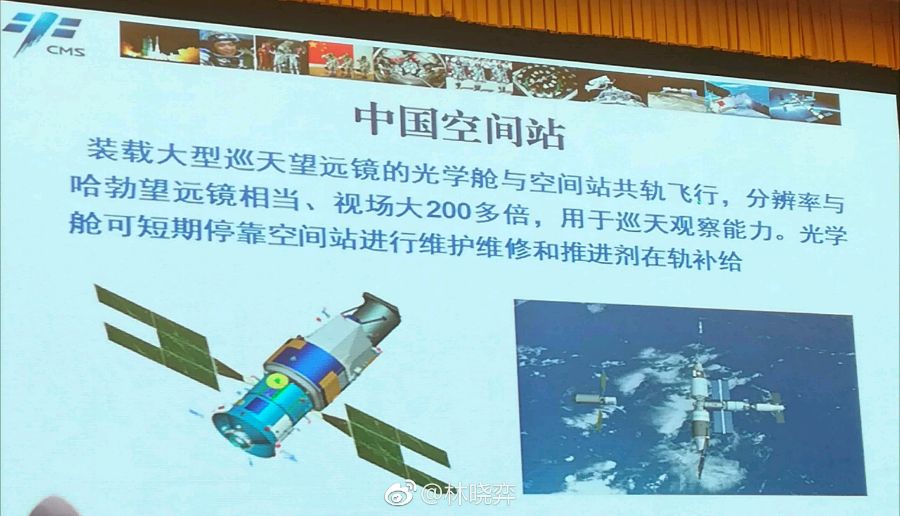
http://web.archive.org/web/20190808.../2018-06/04/xuntian-cmsa-weibo-lin-xiaoyi.jpg ; https://archive.fo/iZfi4/239daa0174a26c89007e4b8660fc6ce696a38f0a.jpg
▲ 17. China's Xuntian (巡天) Space Telescope with a two-meter-diameter primary mirror.
China has produced the world largest aspheric mirror for primarily space military applications: "such a [space platform] can be used to observe low earth orbit satellites of other countries and to [identify, track and target their] missile launches."
The 4.03-meter diameter mirror with a mass of 1.6 tonnes is made of silicon carbide (SiC) by the Changchun Institute of Optics, Fine Mechanics and Physics.
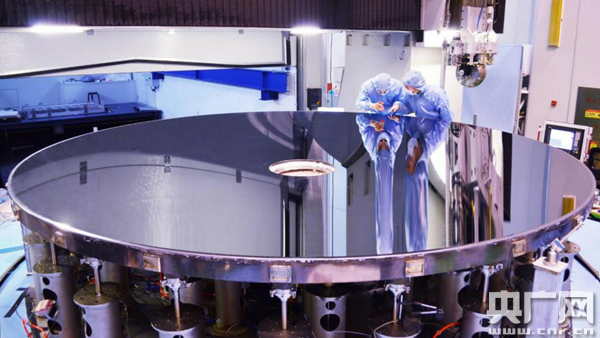
http://web.archive.org/web/20190808...tive/city/20180821/W020180821598981263327.png ; https://archive.is/bx8qA/7e47a16d76ebbd865cb25370d3dbe349d5711449.png ; http://news.cnr.cn/native/city/20180821/W020180821598981263327.png ; http://news.cnr.cn/native/city/20180821/t20180821_524338099.shtml ; https://lt.cjdby.net/thread-2494272-1-1.html ; http://www.globaltimes.cn/Portals/0...8-23/578fd340-828c-499a-b24a-79b72daee939.jpg
▲ 18. The high-precision silicon carbide aspheric mirror with a diameter of 4.03 meters developed by the Changchun Institute of Optics and Fine Mechanics of the Chinese Academy of Sciences is the largest single-crystal silicon carbide mirror in the world. 2018-08-21
According to some source, China's Gaofen-11 surveillance satellite's telescope has a 1.8 meter diameter aperture primary mirror. The same technology for coating the telescope primary mirror with protected aluminium layer could be used for 2.4 meter diameter aperture mirrors.
The research and development on Adaptive Optics (AO) in China began in 1979. In 1980, the first laboratory on AO in China was established in the Institute of Optics and Electronics (IOE), Chinese Academy of Sciences (CAS).
In May 2016, the Institute of Optronics Technology of the Chinese Academy of Science has tested an Adaptive Optics key technology for a 1.8 meter diameter aperture telescope. In closed-loop, the resolution has reached 1.7 times the diffraction limit.
Therefore, this major breakthrough has been awarded the first prize of the National Invention Prize For National Defence 2017. This Adaptive Optics has then been tested onboard the Chang'e 5-T1 lunar probe, allowing to achieve a lunar ground resolution of 0.97 meter.
By 2020, China's CZ-504 space launcher will have a payload capability of 25 tons in LEO.
China has already mastered rendez-vous and space docking with its Tiangong-1 and Tiangong-2 program.
Several launches would be needed for assembling a DEW complex with a total mass of under 100 tons.
By 2030, the CZ-9 SLV would allow payload of 140 tons in LEO.
China has demonstrated its ability to deploy complex array of military satellites, such as the YAOGAN triplets, and the BEIDOU global navigation satellite system (GNSS).
China has no dedicated Space Force, contradicting Japanese RUMINT. But this will be the case once a fleet of space DEWs starts to be launched into orbit.
Thus the pole position for China in initiating the space breakaway.
5.1.4.1. China's Orbital Solar-powered Laser/Maser
The first dual-use civilian-military solar-powered Megawatt-level space-based orbital laser/maser platform project is officially launched, and its mass of 200 tons will require the use of the most powerful CZ-9 launcher:
China to build space-based solar power station by 2035
December 02, 2019
XIAMEN, Dec. 2 -- China plans to accomplish a 200-tonne megawatt-level space-based solar power station by 2035, according to the China Academy of Space Technology (CAST).
The space-based solar power station would capture the sun's energy that never makes it to the planet, said Wang Li, a CAST research fellow with the program, when attending the sixth China-Russia Engineering Forum held last week in Xiamen, southeast China's Fujian Province.
The energy is converted to microwaves or lasers and then beamed wirelessly back to the Earth's surface for human consumption, Wang said.
"We hope to strengthen international cooperation and make scientific and technological breakthroughs so that humankind can achieve the dream of limitless clean energy at an early date," Wang said.
Compared with traditional fossil energy, which has been increasingly exhausted and is responsible for severe environmental issues, space-based solar power is more efficient and sustainable, providing a reliable power supply solution for satellites and disaster-hit areas or isolated areas on the Earth, Wang said.
The concept of collecting solar power in space was popularized by science fiction author Isaac Asimov in 1941. In 1968, Peter Glaser, an American aerospace engineer, wrote a formal proposal for a solar-based system in space.
China has proposed various sunlight collecting solutions and made a number of major breakthroughs in wireless energy transmission since the country listed space-based solar power as a key research program in 2008.
However, ambition has long been a challenge for current technology because it involves the launch and installation of numerous solar panel modules and the efficient wireless transmission of mega energy.
With an investment of 200 million yuan (28.4 million U.S. dollars), China is building a testing base in Bishan, southwest China's Chongqing Municipality, for the research of high-power wireless energy transmission and its impact on the environment.
Researches in this field will spur the country's space science and innovation in emerging industries like commercial space transportations, Wang said.
http://web.archive.org/web/20191204002159/http://en.people.cn/n3/2019/1202/c90000-9637200.html
http://archive.is/jgXk6
This project will allow China to achieve to some extend a deterrence against the U.S. Starlink threat.


TAGS:
BGUSAT, Kwangmyongsong-4, GOSAT-2, Yaogan 25A/25B/25C, FIA-Radar 5, KWANGMYONGSONG R/B, IRS P3, Shijian-16, USA-224, GOSAT, IGS 8A



